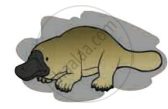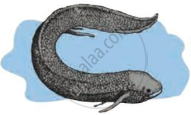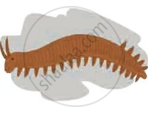Advertisements
Advertisements
प्रश्न
Match the following.
| Column A | Column B |
| 1) Morphological evidences | a) Tail-bone or wisdom teeth |
| 2) Paleontological evidences | b) Leaf venation |
| c) Fossils |
उत्तर
| Column A | Column B |
| 1) Morphological evidences | b) Leaf venation |
| 2) Paleontological evidences | c) Fossils |
संबंधित प्रश्न
(a) Select the analogous structures from the combination given below:
(i) Forelimbs of whales and bats
(ii) Eyes of octopus and mammals
(iii) Tuber of sweet potato and potato
(iv) Tuber of Bougainvillea and tendrils of Cucurbita
(b) State the kind of evolution they represent
Given below is the list of vegetables available in the market. Select from these the two vegetables having homologous structures:
Potato, sweet potato, ginger, radish, tomato, carrot, okra (Lady’s finger)
(A) Potato and sweet potato
(B) Radish and carrot
(C) Okra and sweet potato
(D) Potato and tomato
Study the following statements:-
I. Wings of birds and wings of bats are homologous organs.
II. Wings of birds and wings of insects are modified forelimbs.
III. Wings of birds and wings of insects are analogous organs.
IV. Wings of birds and forelimbs of horse are homologous organs.
The correct statements are
(A) I and II
(B) II and III
(C) III and IV
(D) I and IV
Write the similarity between the wing of a butterfly and the wing of a bat. What do you infer from the above with reference to evolution?
Select two pairs from the following which exhibit divergent evolution. Give reasons for your answer.
(i) Forelimbs of cheetah and mammals
(ii) Flippers of dolphins and penguins
(iii) Wings of butterflies and birds
(iv) Forelimbs of whales and mammals
Four students P, Q, R and S differently reported the following set of organs to be analogous :
P. Forelimb of a frog and forelimb of a lizard
Q. Forelimb of a bird and forelimb of a human
R. Wings of a parrot and wings of a butterfly
S. Wings of a bird and wings of a bat
The two students who have reported correctly are :
(A) P and Q
(B) Q and R
(C) R and S
(D) P and S
Find out from newspapers and popular science articles any new fossil discoveries or controversies about evolution.
Explain the evolution of giraffe's neck according to Lamarck's theory of evolution.
Select and write analogous structures from the list given below :
1) Wings of butterfly and birds
2) Vertebrate hearts
3) Tendrils of Bougainvillea and Cucurbita
4) Tubers of sweet potato and potato
Out of bacteria, spider, fish and chimpanzee, which organism has a better body design in evolutionary terms? Give reason for your answer.
You have potato, carrot, radish, sweet potato, tomato and ginger bought from the market in your jute bag. Identify two vegetables to represent the correct homologous structures.
(A) Potato and tomato
(B) Carrot and tomato
(C) Potato and sweet potato
(D) Carrot and radish
Differentiate between connecting links and the missing links.
Very short answer question.
What are homologous organs?
Find an odd one out.
Appendix : vestigial organ : : Peripatus : ____________
Explain any five types of evidence that support the theory of evolution.
Write the answers to the questions by observing the figure below.
 |
 |
 |
| (a) | (b) | (c) |
- Write the name of the animal ‘(a)’ in the figure.
- Write the name of the animal ‘(b)’ in the figure.
- Write the name of the animal ‘(c)’ in the figure.
- Which evolutionary evidence is illustrated by this figure?
- Write the definition of that evidence for evolution.
Biogenetic law states that ______.
The degenerated and non-functional organs found in an organism are called ______.
How do you differentiate homologous organs from analogous organs?
Select the CORRECT set of homologous organs.
- Define vestigial organs.
- Write names of any two vestigial organs in the human body.
- Write name of those animals in which these vestigial organs are functional.
Why do all the gametes formed in human females have an X chromosome?
Evolution has exhibited a greater stability of molecular structure when compared with morphological structures. Comment on the statement and justify your opinion.
Which of the following is used as an atmospheric pollution indicator?
The bones of forelimbs of whale, bat, cheetah and man are similar in structure, because ______.
Analogous organs arise due to ______.
Fossils are generally found in ______.
What were the characteristics of life forms that had been fossilised?
Explain divergent evolution in detail. What is the driving force behind it?
You have studied the story of Pepper moths in England. Had the industries been removed, what impact could it have on the moth population? Discuss.
What is the function of the appendix of our digestive system?
As shown in figure below some organisms that share a common ancestor have features that have different functions, but similar structures.

These are known as ______. Give example.
Define the term:
Homologous organs
Give a definition of Palaeontology.
